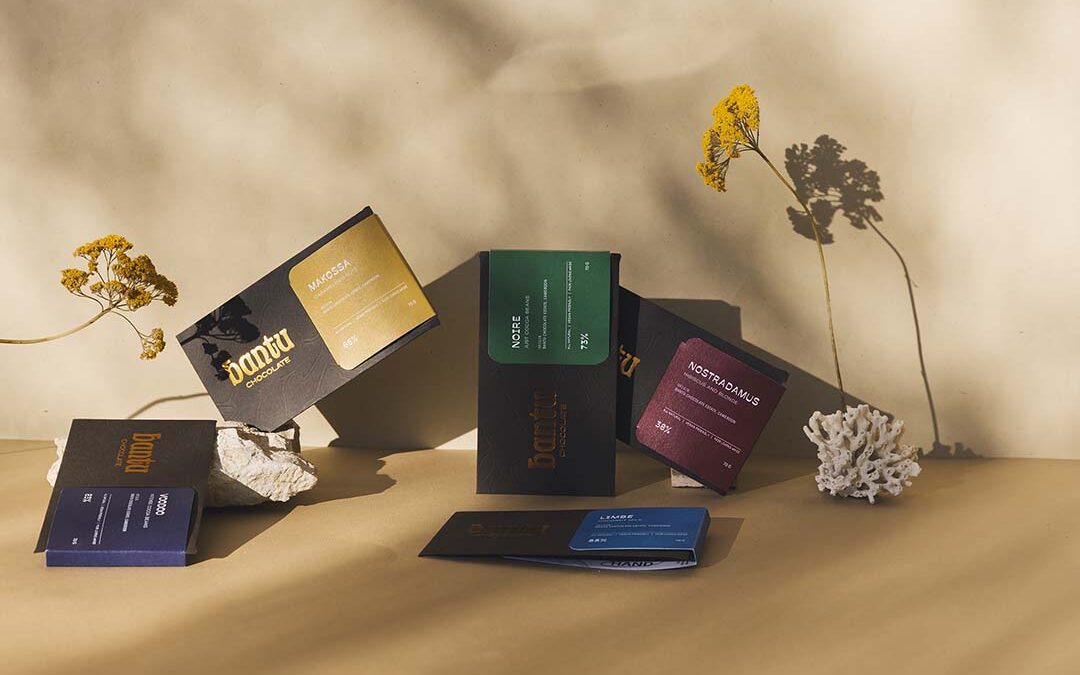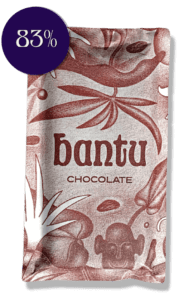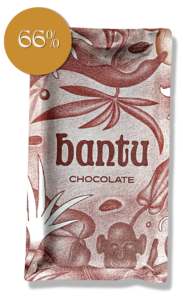
Truly Ethical Chocolate Bars and Brands Worth Your Money – UK
December 5, 2022
Single Origin Chocolate – 5 Reasons It is Better
January 15, 2023How Artisan Chocolates Are Made
Everything You Should Know
Making artisan chocolates is more than just handcrafting tastier chocolates. Artisanal chocolate-making is a movement. It’s a cause.
That’s why before learning how artisan chocolates are made, it’s essential to understand the other aspects that together define this growing movement. Hopefully, you’ll appreciate the passion that drives the small-batch chocolate maker.
What is artisan chocolate?
Artisan chocolate is handmade chocolate, produced in small batches from single-origin cocoa beans, with the chocolate maker usually having control over the sourcing and processing of the cocoa beans.
That sounds like a mouthful. Let me break it down for you with an illustration.
A chocolate maker buys cocoa liquor or couverture from somewhere and uses it to hand make his bars in small batches. Does that make him an artisanal chocolate maker? Not at all.
For chocolate to qualify as artisan, it needs to pass some ‘tests’.
Single-origin: The cocoa beans used are a single variety from a single farm or region. That makes the beans traceable.
Bean to bar: Chocolate made from beans ground into cocoa liquor by the same chocolate maker as opposed to chocolate from purchased cocoa liquor or cocoa cake from a different maker.
Handmade in small batches: Not mass-produced in factories like industrial chocolates.
Sustainable: Its cocoa beans are farmed in a way that protects children from slave labor, and shields farmers and the environment from the plunders of Big Cocoa.
Quality ingredients: Artisan chocolate is premium chocolate as opposed to cheap commercial chocolates with artificial flavors.
Organic, gluten-free, and vegan: Except for milk chocolate, should also be dairy-free. These labels matter as consumer trends veer towards healthier food choices.
High cocoa–content: Except for milk chocolate, artisan chocolate is dark chocolate with a high cocoa content, sometimes as high as 70%-99%.
At Bantu Chocolate, we’re proud makers of flavorful artisan chocolate bars. Actually, we’re tree to bar chocolate makers.
From the growing of cacao trees to the tangy bar on your tongue, we control the entire process to ensure that you can enjoy your treat with a clean conscience. We ensure an equitable, sustainable cocoa supply chain. Which brings me to the next point.
Why are handmade chocolates better?
Handmade artisan chocolates are better than mass-produced industrial chocolates in several ways. These include a variety of unique flavours, health benefits, and social responsibility benefits. They make up the reasons you should prefer craft chocolate.
Let’s look at each.
Variety of Flavors
The flavour of a chocolate product depends on how the cocoa beans are processed from the farm throughout the production process. Because artisan chocolate is made mostly from single-origin beans, they tend to have rich flavors.
Health benefits of artisan chocolates
Dark artisan chocolates (excluding milk chocolates) have high cocoa content. That means they’re rich in antioxidants, especially flavonoids, which have various functions in your body.
-help your brain to perform better (helping to prevent Alzheimer’s and Dementia) and elevates mood. You feel fogged and low? Munch a bar of dark artisan chocolate.
-help prevent the development of various cardiovascular diseases like stroke, diabetes, and cancer.
-The rich cocoa content also means less sugar and other additives. Low calorie count.
Social responsibility benefits of artisan chocolates
When you buy cheap mass-produced chocolate, chances are that somewhere in West Africa, a child, who should’ve been in school, labored on the cocoa farm with hazardous equipment to make that bar cheap. Chances are that cocoa farmers cut down forests to increase yields, yet still received less than $1 a day, while the middleman and especially the chocolate industrialist banks a hefty profit margin.
By patronizing artisan chocolate makers, you help break this vicious cycle of poor cocoa farmers destroying precious forest and wildlife habitat. You help make chocolate production sustainable for everyone, the farmer and the chocolate maker.
At Bantu Chocolate, we practice agroforestry. Our cacao trees grow alongside plantains and forest trees. Great for the soil, water, air, and wildlife.
Now, let’s talk about another important issue. The price of artisan chocolate bars.
Why are Artisan Chocolate Bars so Expensive?
Is it to make artisanal chocolate makers rich? You’d be surprised by this quote from Shawn Akinosie, CEO of Akinosie Chocolate, an artisan chocolate brand.
“Most craft chocolate makers are not rich unless they were rich before they started, in which case they are now less rich. Believe me when I tell you that American small batch chocolate makers who are charging $8, $10, even $12 or more for a chocolate bar are not making a lot of profit.”
We’re driven by a passion for a sustainable, equitable cocoa supply chain. When you buy an artisan chocolate bar, you’re not just buying a tasty treat. You’re promoting a cause. Thank you.
Now, let’s come to it. The making of artisan chocolate bars.
How Artisan Chocolates are Made from Bean to Bar
All bean-to-bar chocolate making follows some basic steps, although each brand has its secret recipe! This is a good thing, though, as it gives chocolate lovers a wide variety of flavors and aromas to sample.
Buy quality beans: For the artisanal chocolate maker, this is already sorted out in the growing, harvesting, fermenting, and drying of their own cacao. You can bet that single-origin beans are better than untraceable beans or chocolate made from combining different varietals of cocoa beans.
For a detailed process from harvesting to drying, see this other article (internal link)
Roast your cocoa beans: Roasting plays three functions. Reduce the water content, kill germs from fermentation and drying stages, and further enhance your cocoa bean flavour.
Each chocolate maker has their roasting method in terms of equipment, temperature, and duration. Roasting can take anywhere from 30 minutes to 2 hours at different temperatures.
Shell the roasted cocoa beans: Shelling removes husks to obtain cocoa nibs.
Ground cocoa nibs: Equipment can vary from heavy steel rollers in large factories to grinding stones at home, but the result is the same: cocoa liquor.
Mix cocoa liquor, cocoa butter, and other ingredients: Chocolate bars and brands have different cocoa content depending on what’s added to cocoa liquor. The most common additives are cocoa butter, sugar, and emulsifier for consistency of texture. Other additives can include milk, vanilla, herbs, chili pepper, and whatever the chocolate maker chooses to experiment with or create.
Cool your mixture and proceed to the next step.
Temper your chocolate: Your final bar needs to have a glossy look, snap when broken or bitten, and melt on your tongue, not on your fingers. That’s the purpose of tempering. But what is chocolate tempering?
Chocolate tempering is the heating and cooling of chocolate to stabilize the cocoa butter so that its crystals don’t stay separate and cause your chocolate to bloom. The technique you use depends on the type of chocolate bar you’re aiming for. Dark chocolate will require higher temperatures than milk or white chocolate.
For details on tempering, see this guide.
Moulding: Pour your tempered melted chocolate into your desired forms or molds and shake it to remove air bubbles. Then leave to cool at room temperature until your chocolate sets.
And that’s it for your homemade artisan chocolate bars.
Sample our Artisan Chocolate Bars
If you’ve read this far, you’re positively a chocoholic (or ready to become one😊) of artisan bars. Why not hop over to our product page and sample our collection of carefully hand-crafted, single-origin, artisanal dark chocolate bars?
Boxed in bio-degradable pouches, our bars are handmade in London with quality beans from our agroforestry (read eco-friendly) farm in Cameroon.
How Artisan Chocolates Are Made: Conclusion
How artisan chocolates are made go beyond moulding cocoa beans into delicious dark bars in small batches by hand. The label artisan chocolate includes the passion that drives the practices of the artisan chocolate maker. When you buy artisanal chocolate, you’re helping promote a worthy cause.
Questions and Answers About Artisan Chocolates
How long does artisan chocolates last?
When stored in a cool, dry place away from light, artisan chocolate can last for months and even years. You don’t need to keep it in a refrigerator or freezer. Unless you want the chocolate to bloom and the great flavours to become polluted by flavours from other items in the fridge. The moisture from refrigeration encourages blooming when you expose your chocolate to warmer temperatures again.
Is artisan chocolate better?
Artisan chocolate is better than mass-produced industrial chocolate in terms of unique great flavours, more cocoa content, and the promotion of best practices to ensure chocolate business sustainability.
Is artisan same as handcrafted?
Yes. Artisan chocolate, craft chocolate, handcrafted or handmade chocolate, all refer to the same thing.
Chocolate Extinction: Fact vs. Fiction + What Chocolate Lovers Can Do
Chocolate ExtinctionFact vs. Fiction, What Consumers Can Do Share On Facebook Twitter Email Is the world really running out of chocolate? Not really. Currently the global […]
Corporate Chocolate Gifting Ideas to Appreciate Employees and Delight Clients
Corporate Chocolate GiftingHow to Appreciate Employees & Delight Clients Share On Facebook Twitter Email When it comes to corporate gifting, a one-gift-fits-all approach just doesn't cut […]
Cacao Supper Club at Home: Guide to Tasting Chocolate, Cacao Tea, and Pulp Juice
Cacao Supper Club at HomeGuide to Tasting Chocolate, Cacao Tea, and Pulp Juice Share On Facebook Twitter Email Imagine gathering around the table with a few […]









